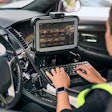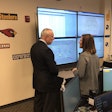On a timeline of public safety innovation and advancements, 2012 will be marked as a blockbuster year. The creation of the National Public Safety Broadband Network (NPSBN) and forward movement in next-generation 911 (NG911) marked a 180-degree turn from just a few years ago. And it's about time.
When I interact with young firefighters and police officers, it's clear they've moved past what agencies provide and have little faith in their department's technological capabilities. Even while on duty, these first responders routinely use devices many say aren't reliable or robust enough.
As I look at the new LTE devices being made today in prototype, I find that I have the same questions about them as I do for iPads, ultralight netbooks, hardened cell phones and other technologies.
The very nature of new technology is uncertain. We're never entirely sure what will work and what will need to be worked on further until a device is placed in a real-world setting—and encounters real-world pitfalls. Public safety agencies must accept this uncertainty and embrace possibilities instead of looking through the lens of "what I use now is fine." Once we all begin to accept these changes in technology, industry application will be limitless.
Take, for example, an undercover officer walking down a street with the latest smartphone. This ordinary smartphone takes on an extraordinary dimension because it's connected through the NPSBN. With this device, the officer has access to tailored applications that offer speech-to-text translation, full-time (rather than just emergency) location tracking, and real-time video distributed on networks around the city.
Similarly, a firefighter could receive valuable information while en route to a building fire. Technology applications could improve situational awareness by providing that firefighter with current building plans annotated with the incident report, live video feeds from security cameras, and mapping data that tracks the expected arrival times and routes of all responding units. Commands could be sent in real time when deploying each unit around the building. All of this would dramatically cut the response time at the scene because everyone would know what to do before they arrived.
The NPSBN and technological advances will also bring big changes to rural areas. Gone are the days of a state trooper patrolling lonely stretches of two-lane and gravel roads with limited to no radio coverage. Instead, patrol vehicles would be equipped with the latest NPSBN router, which would act as the ultimate "gap filler" by automatically changing networks to ensure reliable coverage. Situational awareness would be maintained and the officer would have a lifeline to access information and call for backup when needed.
Every one of these situations demonstrates why we need new technology for first responders. Public safety desperately needs the innovation that's available in commercial mobile broadband to be leveraged into specific technology improvements for police, fire, and EMS. We've finally taken the step toward a nationwide LTE network for first responders. Now let's get the latest technology that can work with it.
Related:
Next-Gen 911: Technology Behind a 911 Call














